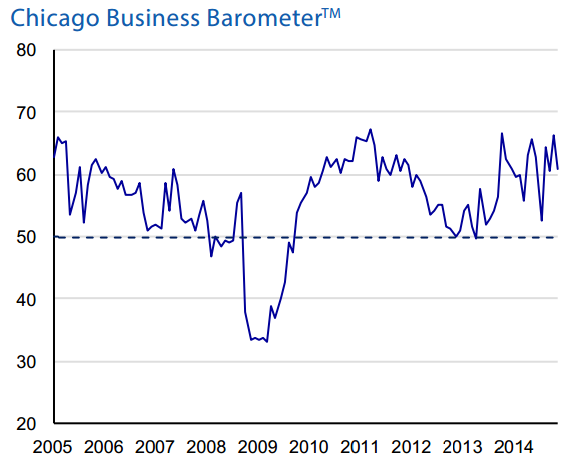Econintersect: The Chicago Business Barometer declined 5.4 points after increasing 5.7 points last month, driven by a large decline in new orders.

The market expected the index between 62.0 and 65.0 (consensus 63.2) versus the actual at 60.8. A number below 50 indicates contraction. From the authors of the index:
The Barometer‘s decline reversed nearly all of October’s sharp increase, leaving it back close to the September level. All five components which contribute to the Barometer fell between October and November. In spite of the slowdown, orders and output continued to expand at a healthy pace. Production, New Orders and the Barometer itself have been running above 60 for four months in a row, suggesting continued firm growth in the US economy.

New Orders decreased by 11.7 points to 61.9 in November having increased sharply to a one year high in October. Overall orders remain firm and barring a sharp fall in December are likely to record firmer growth in Q4 than Q3. While some panellists said November was steady compared with a month ago, others reported a busy period in the run up to Christmas.
Production also expanded at a slower rate, but was the strongest component of the Barometer in November. It’s currently running above both its 10- year average and the average for the past 12 months.
Commenting on the Chicago Report, Philip Uglow, Chief Economist of MNI Indicators said, “Following the sharp rise in the Barometer to a one year high in October it wasn’t too surprising to see activity ease somewhat in November. Overall the trend remains firm and activity looks set to pick up in Q4 from Q3.“
The Chicago ISM is important as it is a window into the national ISM reports which will be issued shortly. When you compare the graph below of the ISM Manufacturing Index against the Chicago PMI (graph above) – there is a general correlation in trends, but not necessarily correlation in values.













Leave A Comment